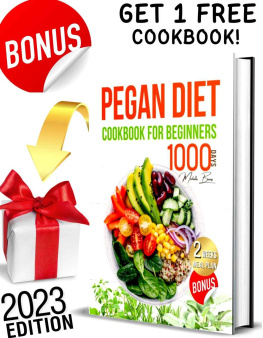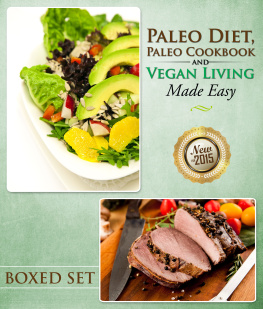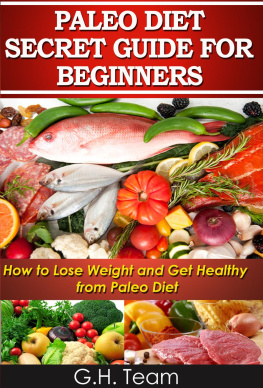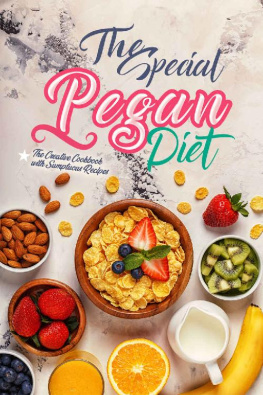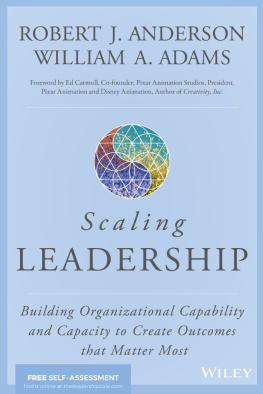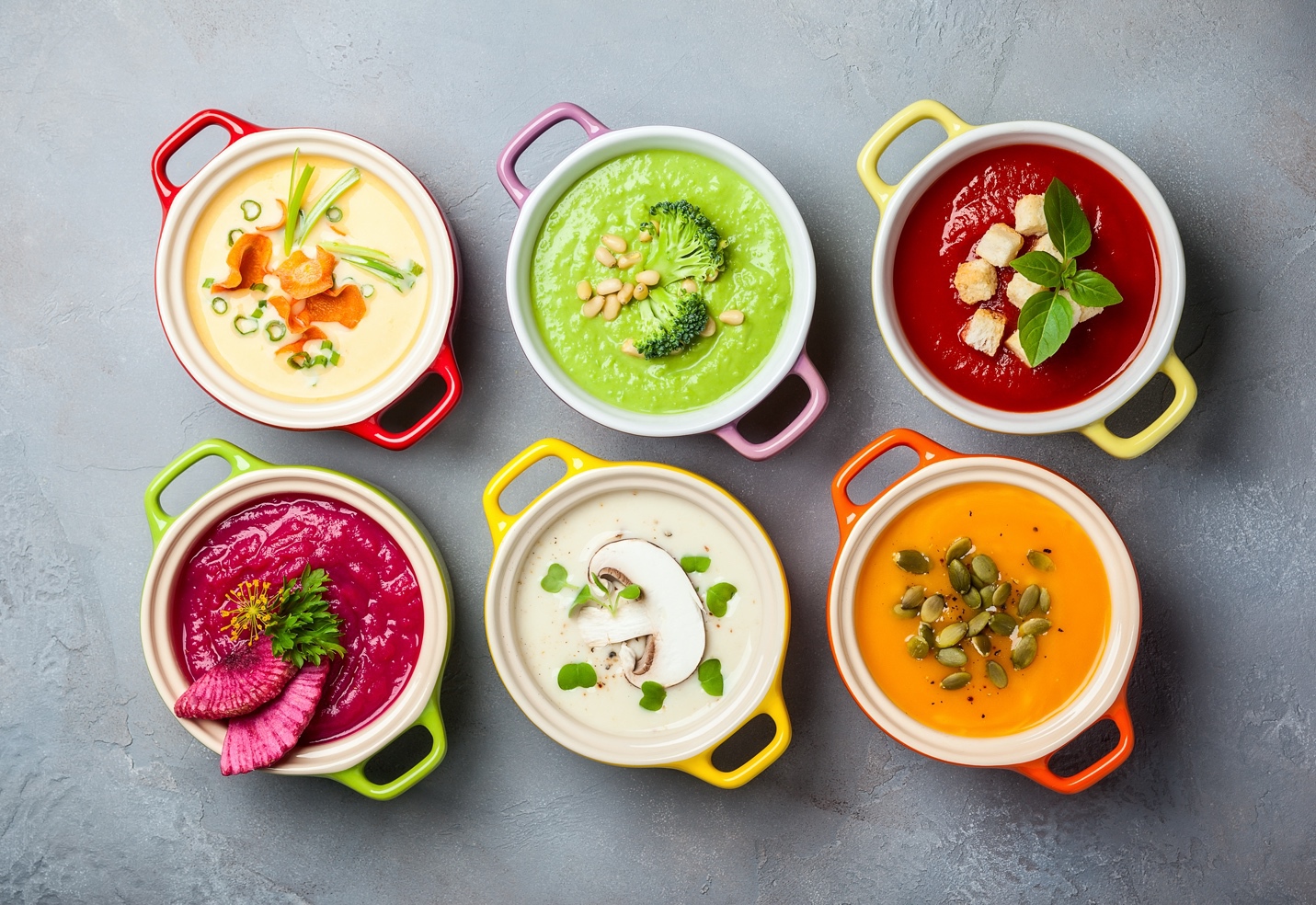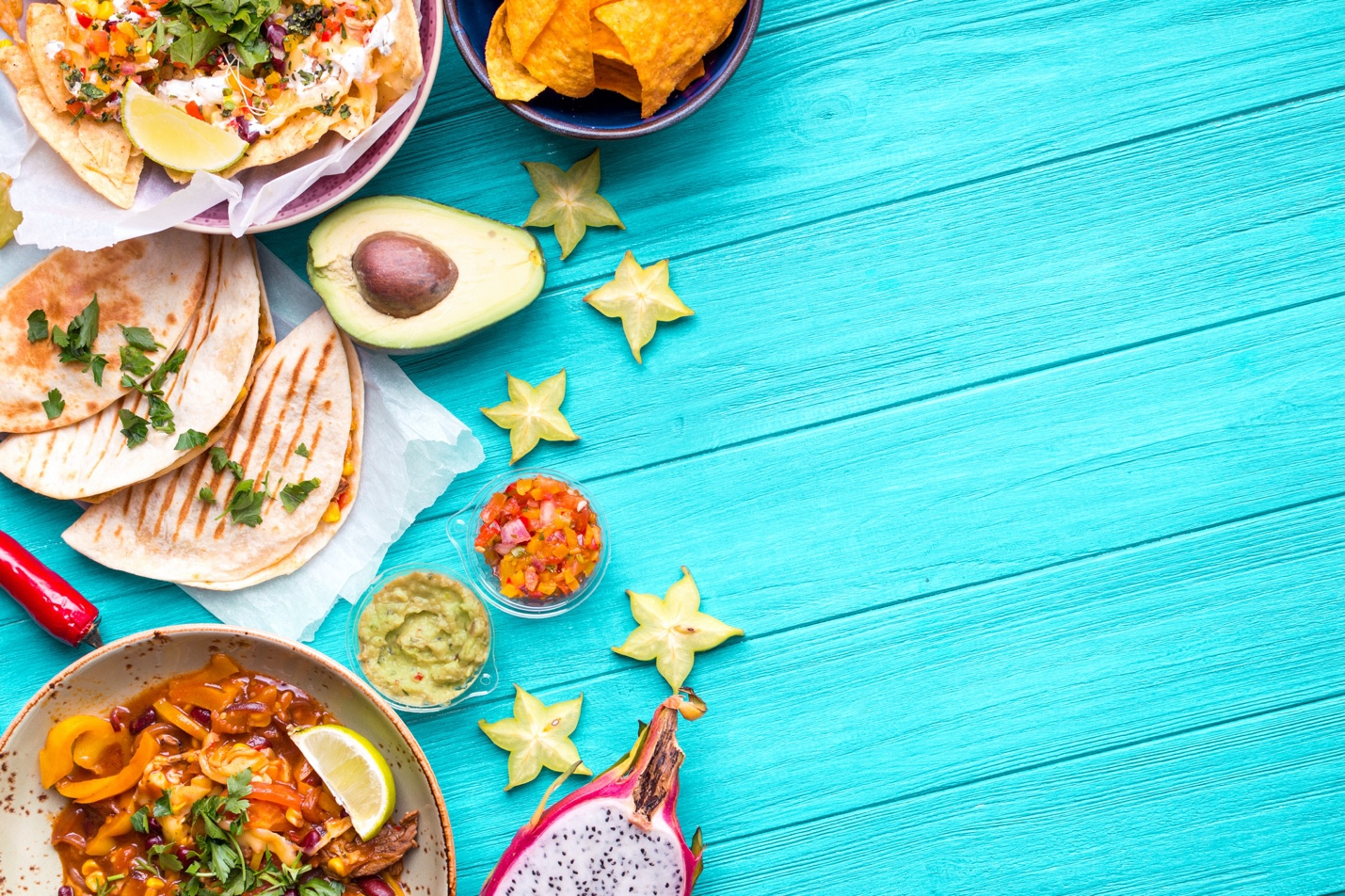THE PEGAN DIET
Eric Donovan, MD
Copyright 2021 - All rights reserved.
This document is geared towards providing exact and reliable information in regards to the topic and issue covered. The publication is sold with the idea that the publisher is not required to render accounting, officially permitted, or otherwise, qualified services. If advice is necessary, legal or professional, a practiced individual in the profession should be ordered.
From a Declaration of Principles which was accepted and approved equally by a Committee of the American Bar Association and a Committee of Publishers and Associations.
In no way is it legal to reproduce, duplicate, or transmit any part of this document in either electronic means or in printed format. Recording of this publication is strictly prohibited and any storage of this document is not allowed unless with written permission from the publisher. All rights reserved.
The information provided herein is stated to be truthful and consistent, in that any liability, in terms of inattention or otherwise, by any usage or abuse of any policies, processes, or directions contained within is the solitary and utter responsibility of the recipient reader. Under no circumstances will any legal responsibility or blame be held against the publisher for any reparation, damages, or monetary loss due to the information herein, either directly or indirectly.
Respective authors own all copyrights not held by the publisher.
The information herein is offered for informational purposes solely, and is universal as so. The presentation of the information is without contract or any type of guarantee assurance.
The trademarks that are used are without any consent, and the publication of the trademark is without permission or backing by the trademark owner. All trademarks and brands within this book are for clarifying purposes only and are the owned by the owners themselves, not affiliated with this document.
CONTENTS
Introduction
What Exactly Is Pegan Diet?
The Paleo Diet is really something interesting, isnt it? I mean, you are taking the core ideas of two very different diets and combining them into producing something that logically should not work, but it works, and it works perfectly!
For those of you who are completely unaware, Pegan is a form of diet produced from the combination of both a Vegan Diet and a Paleo diet. Contrary to what some people think, the Pegan Diet includes both animal products and plant-based foods, including gluten-free grains but excludes refined carbohydrates; it is rich in healthy fat but doesnt allow dairy! In short, it brings everything a very harmonious balance between a Vegan and Pegan Diet to ensure an individual is getting the maximum health benefits!
On the surface, the Vegan and Paleo Diet might seem to be very different. As a matter of fact, they are! The Paleo diet encourages an individual to go on a diet plan that mostly asks them to consume fully organic and unprocessed meat and grains. On the other hand, Vegan asks an individual to completely let go of meat and only focus on foods provided by mother nature herself.
So, how exactly do these two polar opposites work together?
When mindfully combined and taking the best from each, the vegan and Paleo diets produce an amazingly balanced meal plan that is beneficial to the body, mind, and soul. Veganism's emphasis on vegetables and plant proteins provides a plethora of key vitamins and minerals, whereas Paleo's emphasis on unprocessed foods provides anti-inflammatory benefits.
With such a wide variety of different ingredients to choose from, beginners might find it rather difficult to choose which ingredients they are allowed to follow. The simple and handy pantry list provided in this book will help significantly help you with that and allow you to know all the ingredients that you are allowed to consume at a glance.
When you're on your Pegan journey, you'll be astounded by the delicious dishes that can be made with such pure ingredients: mouthwatering Ratatouille, filling salads, decadent spreads, and refreshing sorbets. This book is designed to give you just a taste of the awesome recipes, possibly with the Pegan pantry. Once you get the hang of it, you will be able to come up with amazing recipes of your own!
The Core Tenants Of Pegan Diet
Now that we have a basic idea of what makes up a proper pegan diet, we should look at the principles or the tenets behind the pegan diet. These are tenets that one has to be aware of, as it may be confusing to just use the rule of thumb. After all, a vegan diet is clear; one can only eat plant-based things. A paleo diet is also fairly clear: one should eat simple, unprocessed foods. However, as a pegan diet is separate and less restrictive, the limitations and tenets are not as intuitive. To put it simply, the Pegan diets recommendations are basically sound: fresh, locally sourced, preferably organic food; nothing refined or processed; and a focus on not raising blood sugar. Hyman has stated that the pegan diet can be defined by one simple rule: "If God made it, eat it; if man made it, leave it."
Focus on having a mainly plant-based diet
The first tenet is that one should mostly have a plant-based diet. Though, as we stated earlier, the consumption of animal proteins is allowed, most of the things one eats should be plant-based. In fact, a good rule of thumb to go by is half or a bit more than half of one's plate should be filled with vegetables at the minimum. About seven or eight cups of vegetables and fruits a day are the World Health Organization's recommendation. They would serve as a great starting point. However, not all plant-based foods should be indulged in great quantities. Some foods, such as starchy vegetables like potatoes and squash, should be more limited. Most of the vegetable portion is leafy greens instead. One of the aims of this diet is to help regulate one's blood sugar, meaning that prioritizing low glycemic index foods is important to the diet, and having foods high in simple carbohydrates, high glycemic index foods would defeat the purpose.
Also, fruits should be limited, along with the same principles behind limiting starchy vegetables. However, this tip is more for those who are still overweight and have a greater need to manage blood sugar. If one has no blood sugar problems, most fruit is fine. Suppose one is plagued with managing their blood sugar, however, mostly low. In that case, glycemic index fruits should be consumed, with sweeter fruits being treated every so often, being treated more like candy than a regular part of one's dinner plate.
Make sure to consume healthy fats
The second tenet would be to aim mostly to consume healthy fats. Fats are a very important part of one's nutrition, but remember that it is best consumed in its whole food form. Some of these better fats would be found in unprocessed foods such as nuts, seeds, avocados, olive oil. Some animal products with healthier fats would be eggs and some fatty fish such as salmon, mackerel, herring, and sardines. Using extra virgin olive oil or avocado oil, or even coconut oil to garnish uncooked dishes such as salads or to use when cooking would help. Remember that as this is not a vegan diet, animal and saturated fat from unprocessed sources is allowed, such as meats, fish, eggs, or even butter or ghee. Note, however, that saturated fat is very bad for you if it is combined with refined sugars and starches. Also, common oils such as vegetable, bean, and seed oils tend to be very processed. Thus, they are not recommended to be used.


